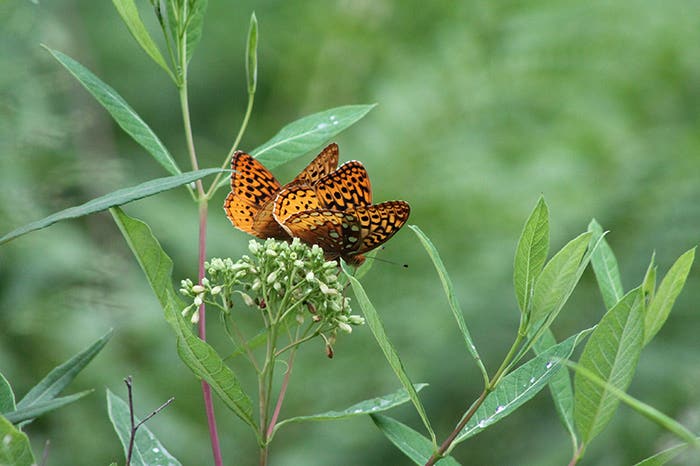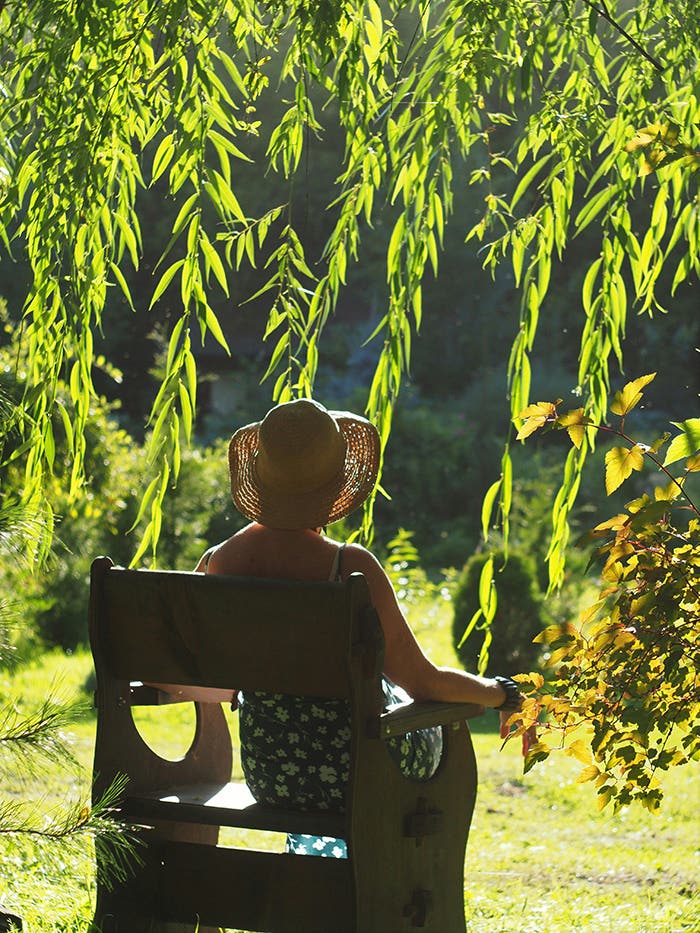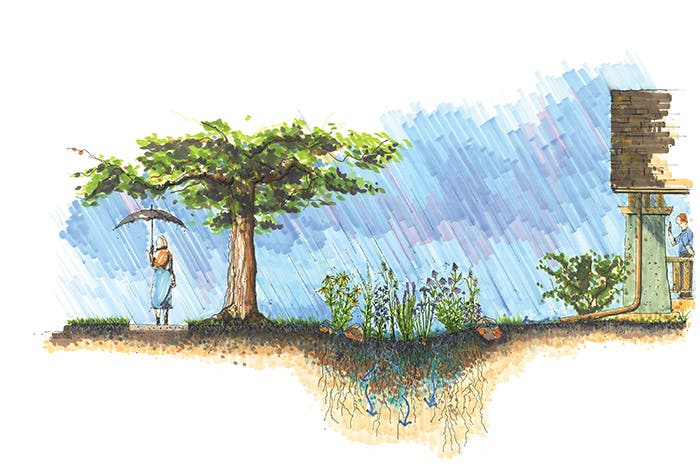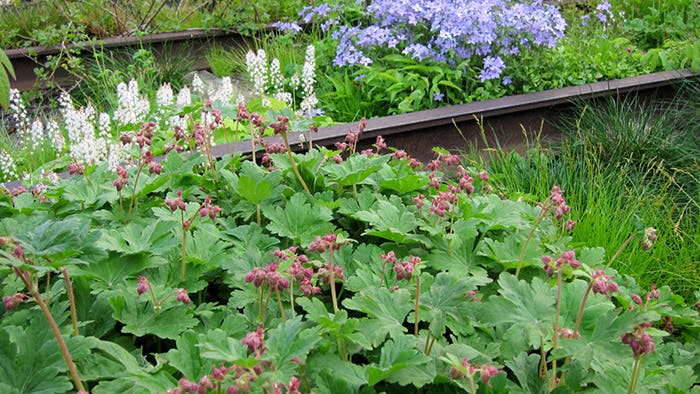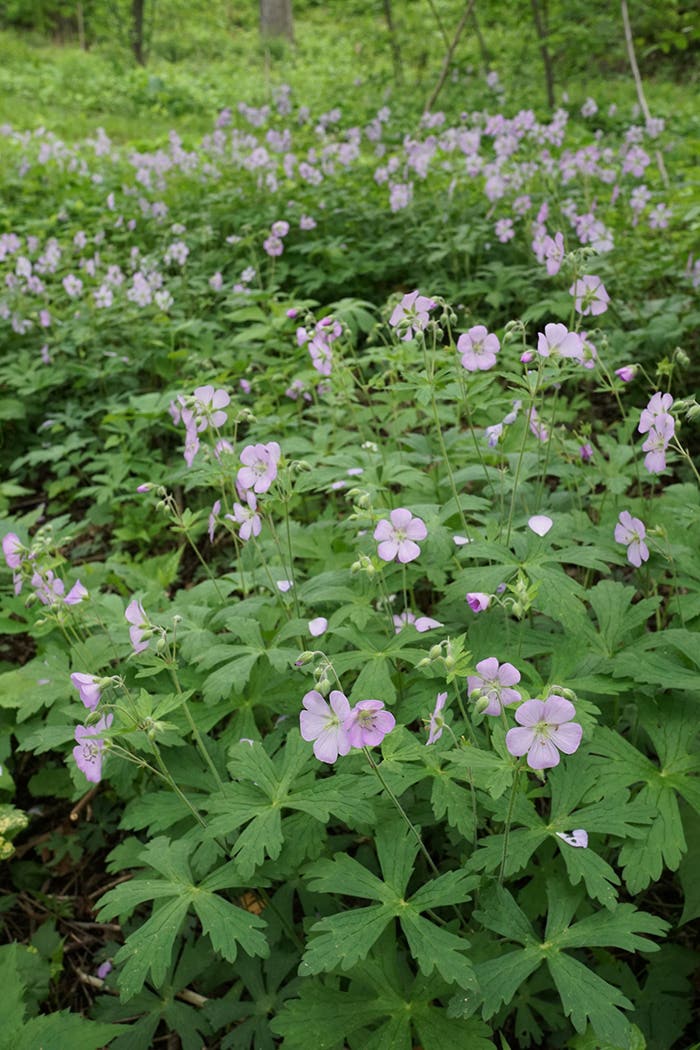Planting a Hedgerow Habitat
You can eat your way along the roadsides of Vinalhaven, Maine, all through the summer and, if you are a bird, gorge during fall migration and snack through the winter…
You can eat your way along the roadsides of Vinalhaven, Maine, all through the summer and, if you are a bird, gorge during fall migration and snack through the winter as well. Blueberry follows Juneberry, and fruiting continues through raspberry, huckleberry, blackberry, gooseberry, chokeberry, chokecherry, crab apple, dogwood, hawthorn, bayberry, Virginia rose, Virginia creeper, mountain holly, elderberry, juniper, mountain ash, sumac, and a variety of viburnums with names like wild raison and cranberry bush. These scrambles of fruit crowd the roadsides wherever there is sun enough to bloom and bear. Were you to clear the spruce woods that rise behind them, leaving open space on either side, what remained would be called hedgerows.
Hedgerow is not a term that has comfortably entered horticultural vocabulary, at least in part because hedgerows are more habitat than ornament, though all the species that form these communities are individually used as ornamentals. They are not hedges that, trimmed or untrimmed, are composed of a single species. They are not even shrub borders: a hedgerow typically includes small trees, and the vegetation grows so entangled that no individual species can grow to be a specimen. Grasses, ferns, and flowers push into the edges and work their way wherever there is space, forming a ground-filling mulch from which the larger species grow.
Pollinators work the flowers through the days; fireflies emerge at night; moths and butterflies overwinter in the protective duff. This abundance of food—high-protein insects and high-calorie fruits—keeps birds well fed throughout the year. The thicketing growth offers prime nesting sites during the breeding season. Starchy fall fruits fuel songbirds for migration. And for those that stay the winter, there is no better protection from cold wind and hungry hawks than hedgerow habitat.
THE CHALLENGE
Vinalhaven is a fishing village on an island 15 miles off the coast of Maine. Stern houses—tall-roofed, plain clapboard, basic white—rise from the harbor over granite hillsides that once were quarried for such notable buildings as the Customs House, Pennsylvania Station, and the Cathedral of St. John the Divine in New York City. Those were prosperous days, and the year-round population then was twice what it is now. From the beginning, though, the town was less prettified than many along the coast, for it has always been more a working community than a summer resort. Arriving from the ferry, you see first the workaday lobster processing plant. You pass a ramshackle boat yard, then a low and modest firehouse that serves also as the Town Office. And then, right beside the Town Office, you see the first of 10 ugly sewer pump stations that were installed along village streets last summer.
Each is a square plot 20 feet on a side. In the center, a concrete tank holds submersible pumps that force the sewage uphill to the treatment plant above the harbor. The tanks are buried to their rims, leaving a 10-foot round of concrete at ground level. Next to the concrete circle, in the rear corner of the square plot, stands a control box. It is made of glaring aluminum, and is about the size and shape of a Port-O-San. Other towns, forced by law to install a sewage system, have had the wherewithal to bury their pump stations. Vinalhaven did not: we had to berry ours.
One of these pump stations stands at the head of our driveway, directly across the narrow street from our neighbor's front door. A few are along roadsides where they are less conspicuous. One is on someone's front lawn. Another edges a salt marsh. The contract with the engineers did not include an obligation to plant the stations, though they submitted a landscape plan, The plan featured paperbark maple, Scotch broom, a West Coast juniper, and Chinese silvergrass plunked in a square of mulch. One could not have devised a planting that more conspicuously set off the pump stations from the island's native vegetation.
There were other problems. Who would weed and water these plots? Who would keep the mulch replenished? How would ornamental grasses and broom survive in shaded sites and at the edge of a salt marsh? Indeed, how would the landscaping be accomplished at all within the very modest town budget of $16,000 for all ten pump stations, a total area of 4,000 square feet?
I was volunteered into tackling these problems by the Town Sewer Committee. Of course I thought of hedgerow habitat. No one waters the roadsides; no one weeds them. They mulch themselves. A shadblow is cheaper than a paperbark maple. Native grasses can be planted from plugs or seed, rather than quart or gallon pots. Ferns—acres of them to be had on the island by permission from willing landowners—can be dug for free. I had only to walk the roadsides to choose the species that would grow in company with one another, blend with surrounding vegetation, and best serve wildlife.
In dry, sunny locations, I chose black huckleberry (Gaylussacia baccata) for its long-time summer fruiting and brilliant scarlet fall color, along with bayberry (Myrica pensylvanica) and common juniper (Juniperus communis) for their contrasting foliage and winter fruit. I substituted sheep laurel (Kalmia angustifolia) on the two moist sites. A pair of shadblows (Amelanchier laevis)—small trees bearing the earliest summer fruit—was included in most locations; crab apples were substituted where they were already prominent in the landscape. In shaded places, the herbaceous matrix from which these trees and shrubs were to grow was hay-scented fern (Dennstaedtia punctilobula) or cinnamon fern (Osmunda cinnamomea) as well as cranesbill (Geranium maculatum). In sunny sites, I used little bluestem grass (Schizachyrium scoparium) and asters (Aster novae-angliae and A. laevis). For the few people whose pump station was on their lawn, I planned to seed the matrix with sheep fescue, a gone-wild, short, fine-textured bunchgrass widely naturalized on the island, and not needing mowing.
The town got two bids from landscaping companies. Both came in at twice the budget. The alternative was to use the Vinalhaven Garden Club as general contractor. They got wholesale bids on the plant materials. The prices came in within budget—but with nothing left for labor. Who was to install this total of 2,240 grass and flower plugs, scores of shrubs in gallon cans, and 22 balled-and-burlapped trees? Not the ladies of the garden club—not all alone: The soil with which the sites had been graded was fill, compacted to pickax hardness. Shovels were a joke; we needed a backhoe and expert supervision for so ambitious a project.
Then one Saturday, a group of landscape architecture students from Rutgers University came to visit my place in New York to learn more about native plantings. Landscape architecture students don't just draw fancy designs—they dig and haul and prune and plant as part of their training. Two of the students, Ben Cassidy and Jamie Morren, agreed to a week-long internship on the island, and they formed the core of our work crews. The rest of the labor force was island volunteers: volunteers to load stock, van by van, at mainland nurseries as far away as 80 miles; to hold and water the plants for weeks prior to planting; to arrange for topsoil and mulch; to locate a backhoe and two operators; to house and feed the interns; to stake the sites and hack and dig and plant and grade and mulch 4,000 square feet of landscape. One grandmother in her 80s joined the mulching crew with grandchildren. The planting was finished in three days.
THE RESULTS
The growth of a hedgerow is a force of nature: A bare spot appears because of some disturbance—plowing, roadwork, a fire—and in move the grasses and the flowers, the shrubs, the small trees, the community of edge habitat, an ecology. So it was with this island community: there was a vacuum to be filled, and like a force of nature the species of people arrived: the planners who saw the ultimate picture, the pioneers who prepared the strategy, the followers who dug in the roots of their labor, the touchers-up who placed asters where butterflies would find them. People are more often destroyers than re-creators of habitat, but in this case there was no division between garden and habitat, between nature's compulsion to fill a vacuum and people's alliance with that force. I am so proud.
I can't say the results have been astonishing, not yet. The steel control boxes measure four-and-a-half feet on each side and stand nine feet high. The pairs of young shadblows won't ever completely screen their shiny hides. But they will grow and lace together, and the thicketing shrubs—the bayberry, the huckleberry—bunched and planted toward the edges, will soon enough violate the strict square sites and spread irregularly into the surrounding bunchgrass. The ferns will push outward too; the flowers will seed themselves about. The birds will come.
And gardeners who helped with this project, and other islanders too, and summer folk who value the island's wildness, and members of the volunteer Sewer Committee—and the students—will have before them evidence that this rich mix of woody border, flower garden, display of ornamental trees and shrubs and grasses—this hedgerow habitat—is a beneficence to the community, human and animal alike.
TEXT FROM NOAH'S GARDEN. 1993 by Sara Stein. REPRINTED WITH PERMISSION.


